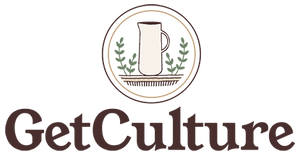What is yogurt?
Yogurt is milk that has formed a soft curd due to the addition and fermentation of specific bacteria. Legally in the U.S., anything called yogurt must contain two specific bacteria: Lactobacillus bulgaricus and Streptococcus thermophilus. Most yogurts contain live, active cultures, which numerous studies have shown to be beneficial to digestive health for most people. It is quite simple and cost-effective to make yogurt at home.
Equipment you will need to get started
It's likely you already own several pieces of the equipment you will need to make yogurt at home. Below is a list of the basics. Stainless steel or glass is always recommended over aluminum equipment since aluminum is easily damaged by many sanitation methods. For sanitation tips, please visit our Sanitation Guidelines page.
- Large stainless-steel pot: this pot should be large enough to comfortably hold one gallon of milk. It's even better if you have two pots, because it is best to heat your milk using a double-boiler method to heat the milk evenly and to prevent scorching.
- Food thermometer: your thermometer should be able to accurately read up to 220ºF. Calibrate your thermometer by placing it into a glass filled with mostly ice and some water; after a minute or so, make sure your thermometer reads 32ºF. Most analog thermometers can then easily be adjusted by twisting the nut found on the back of the head. With your thermometer in the ice water, turn the nut until the temperature is correct.
- Stainless steel or glass measuring spoons
- Large stainless steel mixing spoon
- Incubator: incubators are available commercially (we sell a 2-quart incubator called the Yogotherm), which makes it extra-simple to incubate your cultured milk. However, many people successfully incubate using a medium or large picnic cooler with bottles of hot water placed inside to help maintain the proper incubation temperature of about 106-110ºF. Depending on the ambient temperature in your home, usually this works pretty well.
- Optional: fine-weave cheese cloth or draining bag for draining your yogurt if you want a thicker, denser product such as Greek yogurt.
Ingredients
Milk
Unlike cheesemaking, basically any milk will work for yogurt-making. Even low-fat/skim milk will work well, though higher-fat milk does improve texture and increase the thickness and creaminess of your final product. Pasteurized milk will work best, since the yogurt bacteria that you add to the milk will not have to compete with any existing bacteria such as you will find in a non-pasteurized/raw milk. Special things to note if you prefer to make a raw-milk yogurt are: since this product is eaten fresh and you are creating perfect conditions for bacteria growth, please be quite certain that your milk contains no harmful bacteria. In addition, when making raw-milk yogurt, incubation times will be longer than with pasteurized milk and your yogurt will probably have less body. It should also be noted that cow milk yogurt will set up more firmly than yogurt made with goat or sheep milk.
It is also possible to make yogurt from non-dairy "milks" such as soy, almond, or coconut milk. This does not require any kind of special yogurt culture -- any of the above listed cultures will work with non-dairy milks, though you may have to experiment with the amounts of culture to add for your particular milk. In addition, most non-dairy milks will require the addition of a carbohydrate (ie: sugar) as a food source, needed by the bacteria to grow.
Culture
The special bacteria contained in your culture blend are what will turn your milk into yogurt given the right temperature conditions. We carry several kinds of yogurt culture; the three most popular are our Mild Yogurt, which is a mild-flavor yogurt with the thickest body; Tart Yogurt, which results in more traditional (or tart) yogurt flavor with somewhat thinner consistency, and the Non-dairy yogurt culture which is a special culture made without the use of any dairy whatsoever.
The first two above-listed yogurt culture blends contains a mixture of Lactobacillus delbrueckii subsp. bulgaricus and Streptococcus thermophilus, in addition to added probiotics Lactobacillus acidophilus and Bifidobacterium lactis. The dairy-free yogurt culture contains Lactobacillus delbrueckii subsp. bulgaricus, Streptococcus thermophilus, Bifidobacterium bifidum, Lactobacillus acidophilus, Lactobacillus casei and Lactobacillus rhamnosus.
Optional Ingredients
Other ingredients that you may choose to include: extracts such as vanilla, sweetener (sugar or sugar-free), and/or non-fat milk powder (this is one way to increase thickness). The above items are added during the yogurt-making process; fruit and other such additions are added later, once the yogurt-making process is done.
Basic Steps to Yogurt-making
Step 1: Heat milk to 185°F and hold for 30 minutes. This heating process will help to create a thicker, smoother set. For added body, you can also add 1/2 cup of nonfat powdered milk when your milk is around 100°F.
Step 2: Cool milk to 110-115°F and add yogurt culture: 1/8 tsp for a quart of milk or 1/4 tsp. for 1/2 to 4 gallons of milk. Gently stir in culture until dissolved. As a flavor option, add a few drops of vanilla and/or sweetener when adding the culture.
Step 3: Hold temperature at 106°-110°F for approximately 6-8 hours with your incubator or incubating method. Raw or goat milk will require a longer incubation time.
Step 4: Refrigerate; add honey and/or fruit if desired when serving. Use within 2-3 weeks.

